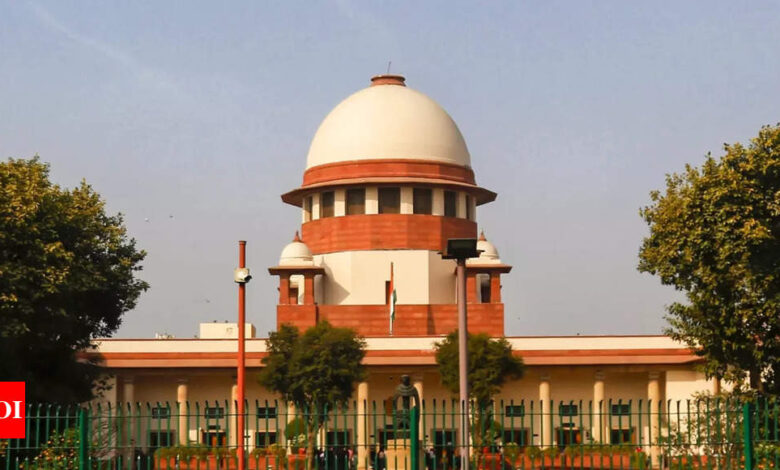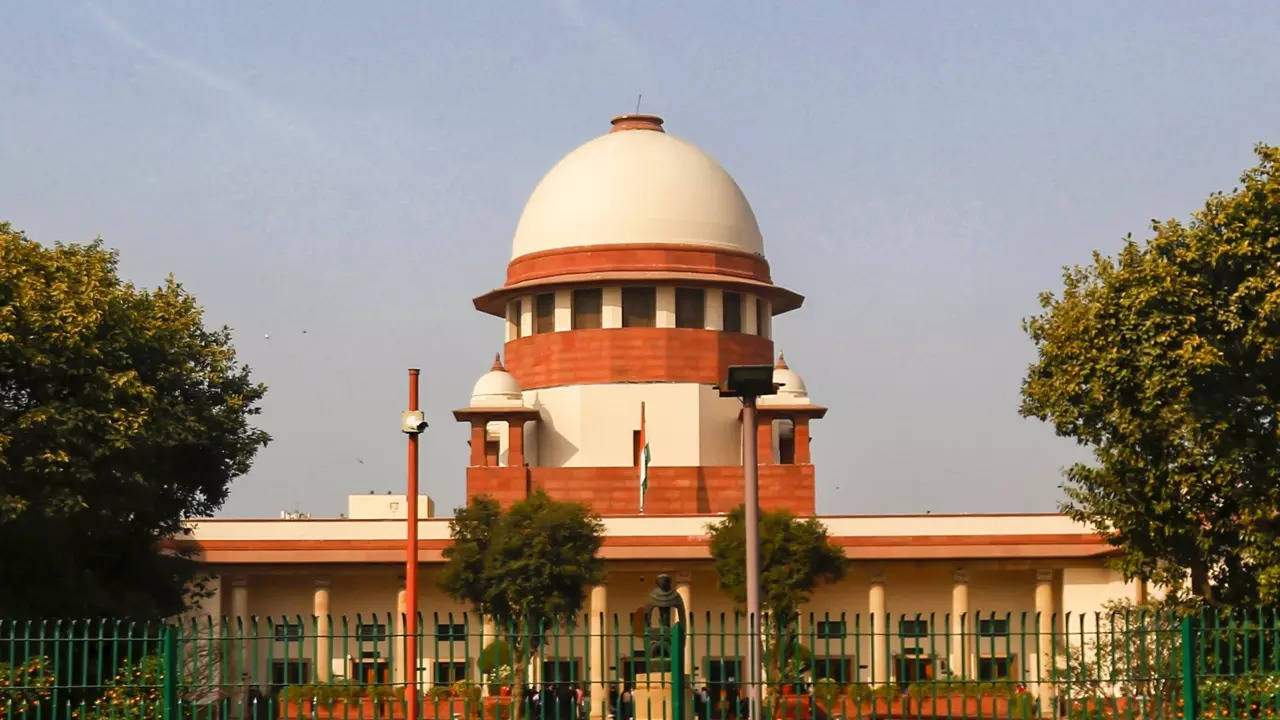India
Why Supreme Court ruled in favour of Ram Mandir construction in Ayodhya | India News

[ad_1]
NEW DELHI: Preparations are on in full swing for the grand inauguration of the Ram Temple in Ayodhya on January 22. Prime Minister Narendra Modi, who will preside over the consecration ceremony, is on a 11-day special ‘anushthan’ ahead of the ‘Pran Pratishtha.’
The idol of lord Ram will be placed at its position at the ‘Garbh Griha’ of the temple on January 18 and Pran Pratishtha will take place at 12.20pm on January 22.The formal procedures of pre-Praan Pratishtha sacraments will start on January 16 and continue till January 21.
It was a historic decision of the Supreme Court on November 9, 2019 that put an end to the centuries-old dispute in Ayodhya and paved the way for the construction of the Ram Temple.
The bench of Chief Justice Ranjan Gogoi, then CJI-designate Sharad Arvind Bobde and Justices Dhananjaya Y Chandrachud, Ashok Bhushan and S Abdul Nazeer took just 23 days to author a common judgment running into 929 pages. The bench had reserved its verdict on October 16 and delivered it on November 9.
Here is a comprehensive summary of the key reasons and factors leading to the apex court’s decision:
Disputed land granted to Deity Ram Lalla: The Supreme Court, through a unanimous verdict, settled the dispute by granting the entire 2.77-acre disputed land for the construction of a temple dedicated to the deity Ram Lalla, one of the three claimants in the case.
Land for mosque construction: In addition to the land for the temple, the court allocated five acres at a prominent place in Ayodhya for the construction of a mosque.
Here are the reasons outlined by the Supreme Court for ruling in favor of Ram Lalla and the construction of a temple at the Ayodhya site:
Better evidence by Hindu parties: The Supreme Court found that the Hindu parties provided better evidence to substantiate their right over the disputed land. This evidence demonstrated continuous worship at the disputed structure by Hindus for centuries.
Competing rights over the disputed site: Both Hindus and Muslims had competing rights over the disputed site. However, the Hindus showed better evidence of their continuous worship at the disputed structure, which was a key factor in the Court’s decision.
Lack of exclusive Muslim possession: There was no evidence produced by the Muslim parties that indicated their possession of the disputed structure was exclusive and that the offering of namaz (prayer) was exclusionary of Hindus.
Possession of the outer courtyard: The court noted that Muslims had never been in possession of the outer courtyard of the disputed site. While the inner courtyard was a contested site with conflicting claims, there was no abandonment of the mosque by Muslims as namaz was offered till December 1949.
Sunni Waqf Board’s failure to establish ownership: The Sunni Waqf Board did not succeed in establishing ownership through adverse possession or through waqf (dedication by user), which was another significant factor considered by the Court.
Trust for temple construction: The Supreme Court directed the Centre, which had acquired the disputed land and adjacent areas, to set up a trust for the construction of the temple. This was part of the verdict to resolve the dispute and facilitate the construction of the Ram temple at the site.
The idol of lord Ram will be placed at its position at the ‘Garbh Griha’ of the temple on January 18 and Pran Pratishtha will take place at 12.20pm on January 22.The formal procedures of pre-Praan Pratishtha sacraments will start on January 16 and continue till January 21.
It was a historic decision of the Supreme Court on November 9, 2019 that put an end to the centuries-old dispute in Ayodhya and paved the way for the construction of the Ram Temple.
The bench of Chief Justice Ranjan Gogoi, then CJI-designate Sharad Arvind Bobde and Justices Dhananjaya Y Chandrachud, Ashok Bhushan and S Abdul Nazeer took just 23 days to author a common judgment running into 929 pages. The bench had reserved its verdict on October 16 and delivered it on November 9.
Here is a comprehensive summary of the key reasons and factors leading to the apex court’s decision:
Disputed land granted to Deity Ram Lalla: The Supreme Court, through a unanimous verdict, settled the dispute by granting the entire 2.77-acre disputed land for the construction of a temple dedicated to the deity Ram Lalla, one of the three claimants in the case.
Land for mosque construction: In addition to the land for the temple, the court allocated five acres at a prominent place in Ayodhya for the construction of a mosque.
Here are the reasons outlined by the Supreme Court for ruling in favor of Ram Lalla and the construction of a temple at the Ayodhya site:
Better evidence by Hindu parties: The Supreme Court found that the Hindu parties provided better evidence to substantiate their right over the disputed land. This evidence demonstrated continuous worship at the disputed structure by Hindus for centuries.
Competing rights over the disputed site: Both Hindus and Muslims had competing rights over the disputed site. However, the Hindus showed better evidence of their continuous worship at the disputed structure, which was a key factor in the Court’s decision.
Lack of exclusive Muslim possession: There was no evidence produced by the Muslim parties that indicated their possession of the disputed structure was exclusive and that the offering of namaz (prayer) was exclusionary of Hindus.
Possession of the outer courtyard: The court noted that Muslims had never been in possession of the outer courtyard of the disputed site. While the inner courtyard was a contested site with conflicting claims, there was no abandonment of the mosque by Muslims as namaz was offered till December 1949.
Sunni Waqf Board’s failure to establish ownership: The Sunni Waqf Board did not succeed in establishing ownership through adverse possession or through waqf (dedication by user), which was another significant factor considered by the Court.
Trust for temple construction: The Supreme Court directed the Centre, which had acquired the disputed land and adjacent areas, to set up a trust for the construction of the temple. This was part of the verdict to resolve the dispute and facilitate the construction of the Ram temple at the site.
#Supreme #Court #ruled #favour #Ram #Mandir #construction #Ayodhya #India #News




